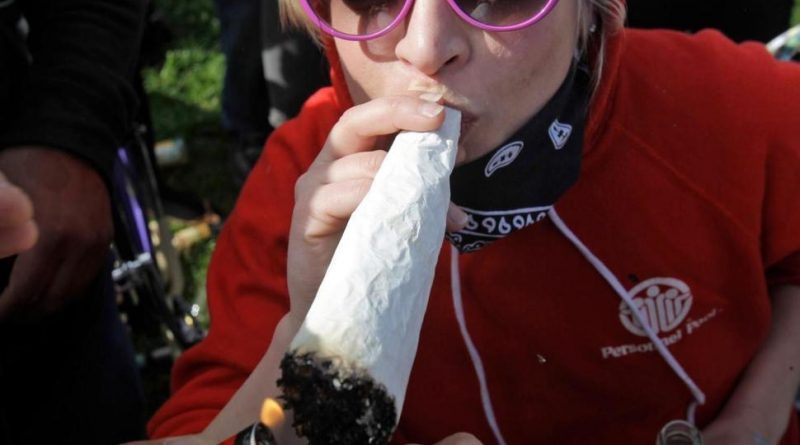Know More About 4/20, Day Sets Aside For Celebration Of Marijuana in USA (pics)

Last Thursday marks marijuana culture’s high holiday, 4/20, when college students gather — at 4:20 p.m. — in clouds of smoke on campus quads and when pot shops in legal weed states thank their customers with discounts.
This year’s edition provides an occasion for pot activists to reflect on how far their movement has come, with recreational pot now allowed in eight states and the nation’s capital, as well as a changed national political climate that could threaten to slow or undermine their cause.
Here’s a look at the holiday’s history.
WHY 4/20?
The origins of the date, and the term “420” generally, were long murky. Some claimed it referred to a police code for marijuana possession or that it arose from Bob Dylan’s “Rainy Day Women No. 12 & 35,” with its refrain of “Everybody must get stoned” — 420 being the product of 12 times 35.
But in recent years, a consensus has emerged around the most credible explanation: that it started with a group of bell-bottomed buddies from San Rafael High School in California, who called themselves “the Waldos.” A friend’s brother was afraid of getting busted for a patch of cannabis he was growing in the woods at Point Reyes, so he drew a map and gave the teens permission to harvest the crop, the story goes.
During fall 1971, at 4:20 p.m., just after classes and football practice, the group would meet up at the school’s statue of chemist Louis Pasteur, smoke a joint and head out to search for the weed patch. They never did find it, but their private lexicon — “420 Louie,” and later just “420” — would take on a life of its own.
The Waldos saved postmarked letters and other artifacts from the 1970s referencing “420,” which they now keep in a bank vault, and when the Oxford English Dictionary added the term last month it cited some of those documents as the entry’s earliest recorded uses .
HOW DID ‘420’ SPREAD?
A brother of one of the Waldos was a close friend of Grateful Dead bassist Phil Lesh, as Lesh once confirmed in an interview with the Huffington Post. The Waldos began hanging out in the band’s circle, and the slang spread.
Fast-forward to the early 1990s: Steve Bloom, a reporter for the cannabis magazine High Times, was at a Dead show when he was handed a flier urging people to “meet at 4:20 on 4/20 for 420-ing in Marin County at the Bolinas Ridge sunset spot on Mt. Tamalpais.” High Times published it.
“It’s a phenomenon,” said one of the Waldos, Steve Capper, now 62 and a chief executive at a payroll financing company in San Francisco. “Most things die within a couple years, but this just goes on and on. It’s not like someday somebody’s going to say, ‘OK, Cannabis New Year’s is on June 23rd now.'”
Bloom, now the editor in chief of Freedom Leaf Magazine, notes that while the Waldos came up with the term, the people who made the flier — and effectively turned 4/20 into a holiday — remain unknown.
HOW IS IT CELEBRATED?
With weed, naturally. Some of the celebrations are bigger than others; Hippie Hill in San Francisco’s Golden Gate Park typically draws thousands. In Seattle, the organizers of the annual Hempfest event are anticipating about 250 people at a private party. Some pot shops are offering discounts or hosting block parties.
THE POLITICS
This year’s 4/20 follows successful legalization campaigns in California, Nevada, Maine and Massachusetts, which join Alaska, Colorado, Oregon and Washington as states that allow recreational marijuana. More than half the states allow medical marijuana.
But it remains illegal under federal law. Attorney General Jeff Sessions this month ordered a review of marijuana policy to see how it may conflict with the President Donald Trump’s crime-fighting agenda, and Homeland Security Secretary John Kelly recently called marijuana “a potentially dangerous gateway drug that frequently leads to the use of harder drugs.” That’s a view long held by drug warriors despite scant evidence for its validity.
Sixty percent of adults support legalizing marijuana, according to a Gallup poll last fall, and two-thirds of respondents in a Yahoo/Marist poll released this week said marijuana is safer than opioids.
Credit AP





